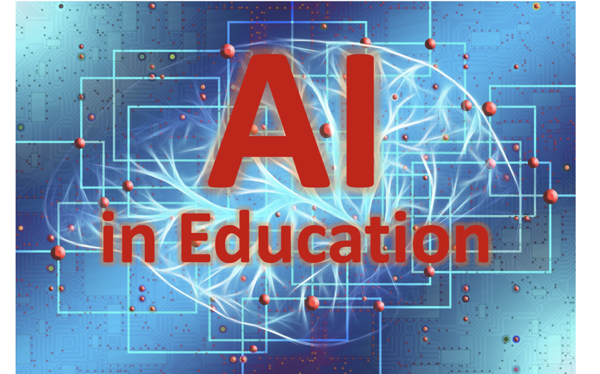
By Judy Ameline, Judy Chyung, and Emily Thompson
We hope you enjoy this reading list, curated by Librarians at the TDSB Professional Library in the Library Learning Resources and Global Education Department of the Toronto District School Board. Links to the TDSB Professional Library Catalogue have been provided for informational purposes, but the items are accessible to TDSB staff only.
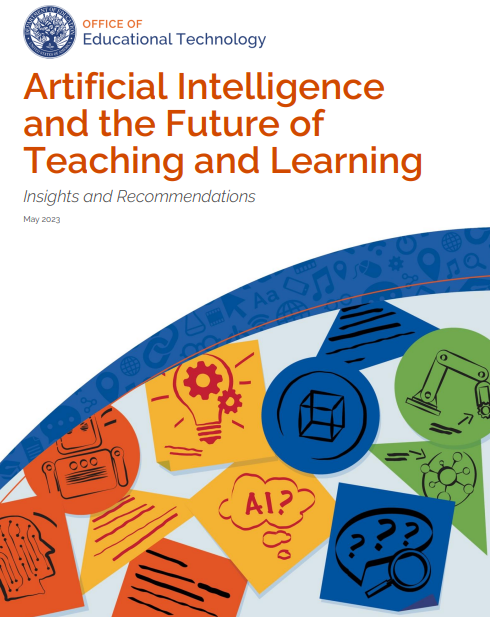
Artificial intelligence and the future of teaching and learning: Insights and recommendations. (2023). U.S. Department of Education, Office of Educational Technology. Online Document
This report from the U.S. Department of Education addresses the need to share information about the potential for artificial intelligence in education and to build equitable, ethical policies around its use. Providing insights synthesized from stakeholder consultation, the report begins by outlining a definition of AI and proceeds to discuss the role of AI in 4 key areas: learning, teaching, assessment, and research and development with the goal of exploring implications for improving educational opportunities and outcomes for students. Within these topics, three themes are explored: opportunities and risks, trust and trustworthiness, and the quality of AI models. The report finishes with seven recommendations for policy action directed at educational leaders.
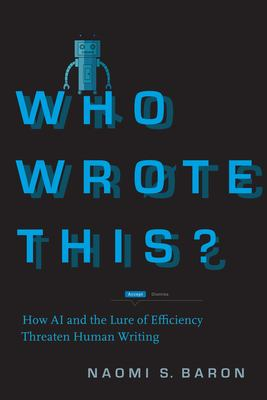
Baron, N. S. (2023). Who wrote this?: How AI and the lure of efficiency threaten human writing. Stanford University Press. eBook
In this book, Naomi S. Baron helps the reader understand how AI is redefining communication and what it means to write and think. Baron outlines the evolution of both literacy and AI, offers insight into their possible future, and cautions us that if we become lazy and let AI do all the work we risk losing not only our technical skills, but the ability to use writing as a means for reflection and expression. Baron reinforces the need for us to make choices regarding our use of AI and to be aware of the point at which AI’s fluency and efficiency may not always be in our best interest – that this amazing technology may become more of a detriment than a benefit to our existence as literate beings.
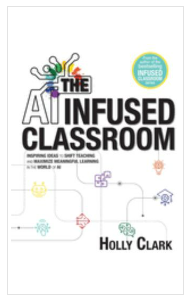
Clark, H. (2023). The AI infused classroom: Inspiring ideas to shift teaching and maximize meaningful learning in the world of AI. Elevate Books Edu. Print
Open-source, content-creating AI models are a relatively new addition to the education landscape. With the increasing popularity of these tools, educators are asking more and more questions: What are the benefits and drawbacks of artificial intelligence (AI) models, like ChatGPT? How do tools like ChatGPT impact student assessment and the writing process? How can we teach students to use AI appropriately and in ways that support and enhance their learning experiences? With this book Holly Clark offers educators a practical guide for navigating this new technology and effectively integrating AI in their classroom, reassuring us that AI will not replace the need for highly qualified teachers in the classroom because, now more than ever, students need teachers’ guidance to ensure they are prepared for the brave new world of AI.

Fitzpatrick, D., Fox, A., & Weinstein, B. (2023). The AI classroom: The ultimate guide to artificial intelligence in education. TeacherGoals Publishing.
This resource provides educators with practical strategies for incorporating AI tools into their classroom, while exploring the potential of AI to transform traditional models of teaching and learning. The author illustrates how AI can help create inclusive and accessible learning environments, differentiate learning, work more efficiently and save time. The AI Classroom is the ultimate guide for navigating the complexities and possibilities of artificial intelligence tools in education.
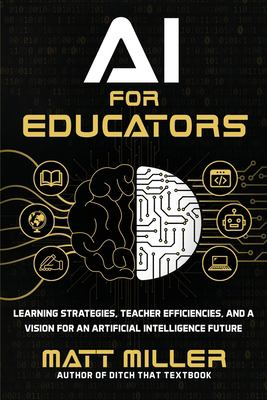
Miller, M. (2023). AI for educators: Learning strategies, teacher efficiencies, and a vision for an artificial intelligence future. Ditch That Textbook. Print
This book shows teachers how to use AI in the classroom to enhance their teaching and learning. It explains what AI is, how it can transform the classroom, and how it can prepare students for the AI-integrated world. It provides 30 practical ideas for teachers to use in various subjects and activities. The book also explores the ethical and social implications of AI, such as cheating, plagiarism, responsibility, and preparedness.
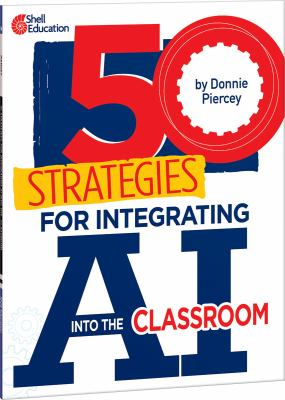
Piercey, D. (2023). 50 strategies for integrating AI into the classroom. Shell Educational Publishing. eBook
This book is a guide for teachers who want to integrate AI into their classroom. It is written by a teacher who shares his insights and tips from his own experience of using AI in his classroom. It is a useful book for teachers who want to learn more about AI and how it can benefit their teaching. The book offers 50 practical strategies to help K-12 teachers to use AI to design meaningful, engaging and interactive lessons for their students. Each strategy provides a lesson plan with activities and a lesson extender to suit different levels of learners.
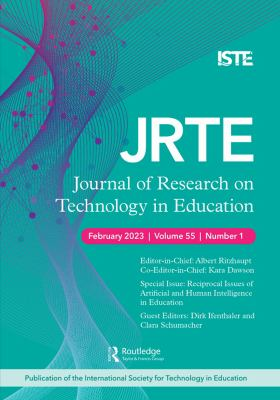
Ritzhaupt, A., & Dawson, K. (Eds). (2023). Reciprocal issues of artificial and human intelligence in education. Journal of Research on Technology in Education (Special Issue). International Society for Technnology in Education. Print
This special issue of The Journal of Research on Technology in Education (JRTE) summarizes the latest research and theory that explore the opportunities and risks of AI in education. The articles in this issue examine how AI can support and improve learning outcomes, pedagogical strategies, and educational equity, as well as how educators and learners can address the ethical issues related to AI.
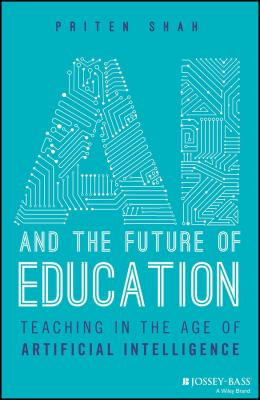
Shah, P. (2023). AI and the future of education: Teaching in the age of artificial intelligence. Jossey-Bass. eBook
This book aims to help teachers use AI as a tool to enhance teaching and learning and overcome challenges and fears. It explains what AI is, what it can do, and how it can be used in education. It provides practical strategies and ethical considerations for using AI in various aspects of education, such as lesson design, student engagement, assessment, feedback, and professional development. This book is for K-12 educators, leaders, and policymakers who want to learn more about AI and its role in education.

Arora, V. (2022). Artificial intelligence in schools: A guide for teachers, leaders, and technology administrators. Routledge. Print
In this book, author Varun Arora explores AI’s potential as a powerful problem-solving tool for educators, administrators, technology leaders, and learners alike. Arora focuses on seven key educational priorities where AI might be leveraged, such as: feedback and assessment, student empowerment, classroom management, curriculum alignment, professional development, and more. Each chapter highlights new vocabulary and suggests AI tools to try. Appendices offer a brief history of AI and how “natural things” can be transformed into mathematical data.
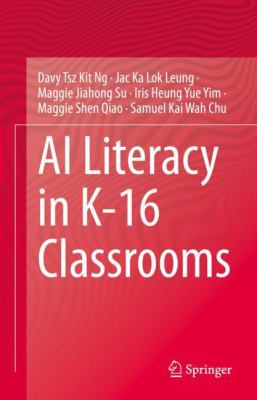
Ng, D. T. K. (2022). AI literacy in K-16 classrooms. Springer. eBook
Part I of this title is conceptual, taking pains to distinguish AI literacy – which speaks to equipping learners with the literacy skills needed to thrive in an AI-forward future – from AI in education, which refers to the adoption of AI tools or technologies for educational purposes (e.g., to automate grading or assessment). Part II outlines AI literacy for students of all ages, from early childhood through post-secondary. Part III is aimed at instructional designers and takes a human-centered AI approach, paying careful attention to ethical considerations for responsible AI design.
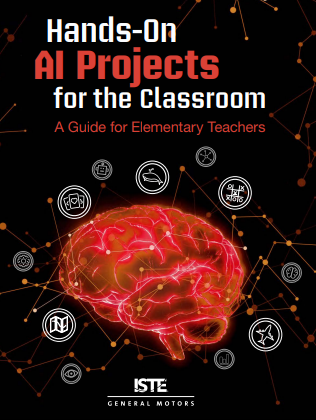
Black, N. B., & Brooks-Young, S. (2021). Hands-on AI projects for the classroom: A guide for elementary teachers. ISTE. Online Document
This guide is for educators interested in integrating AI into their elementary classrooms. It outlines a variety of projects with a student-driven focus, covering what AI does (and does not do) well, training data and machine learning, senses vs. sensors, and navigation and AI. Each project features a range of activities enriched by learning objectives, standards, materials lists, educator resources, and more. A glossary is included, as are appendices that unpack AI concepts and outline how the included projects align to ISTE standards and competencies.
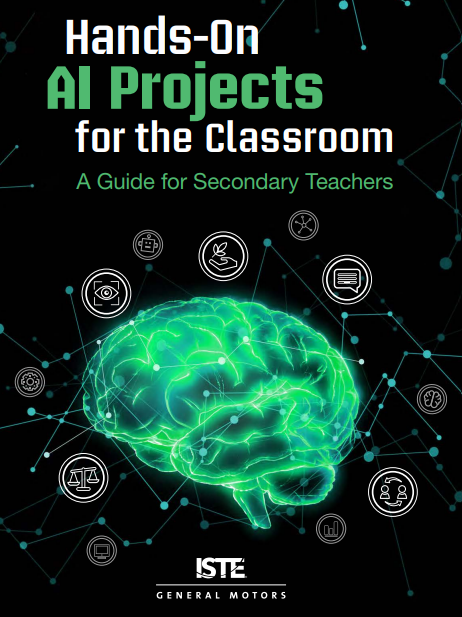
Black, N. B., & Brooks-Young, S. (2021). Hands-on AI projects for the classroom: A guide for secondary teachers. ISTE. Online Document
In a natural follow-up to the title above, this guide is for secondary educators keen on incorporating AI into their high school classrooms. Hands-on projects feature AI chatbots, using AI to solve environmental problems, and laws for AI. Projects take a student-driven approach, and include a range of activities with detailed overviews, preparation notes, instructions, and extensions. Of particular interest are the projects devoted to developing a critical eye, which will help secondary students explore the ways that both information and disinformation are created and distributed through AI-supported tools and technologies.

Judy Ameline is a librarian at the Toronto District School Board Professional Library with almost 30 years experience providing reference service. She is passionate about providing TDSB teachers and leaders access to current, cutting edge information in the field of education to support their professional development needs. Check out the Library’s Pinterest Boards and follow her on Twitter @AmelineJudy

Judy Chyung has extensive experience providing Education Reference and Online Services to the educators and leaders of Toronto District School Board at the TDSB Professional Library. She enjoys reading and learning about the trends in education literature, and assisting TDSB educators with their information needs whether for their classroom support or for their professional learning. One of the initiatives that she leads is the curated Resource Guides for Heritage Months celebrated by TDSB. Currently she is deeply involved in developing Subject Guides to support TDSB educators and students with their curriculum resource needs. These Subject Guides can be found in the TDSB Virtual Library under the FIND tab.

Emily Thompson is a Reference and Digital Resources Librarian with the Toronto District School Board Professional Library. Prior to joining the TDSB this year, she spent nearly a decade in public librarianship and is passionate about early literacy. She is excited to be a part of the TDSB Professional Library team, connecting users of all ages with digital resources through the Virtual Library. Follow the TDSB Virtual Library on Twitter: @tdsbVL